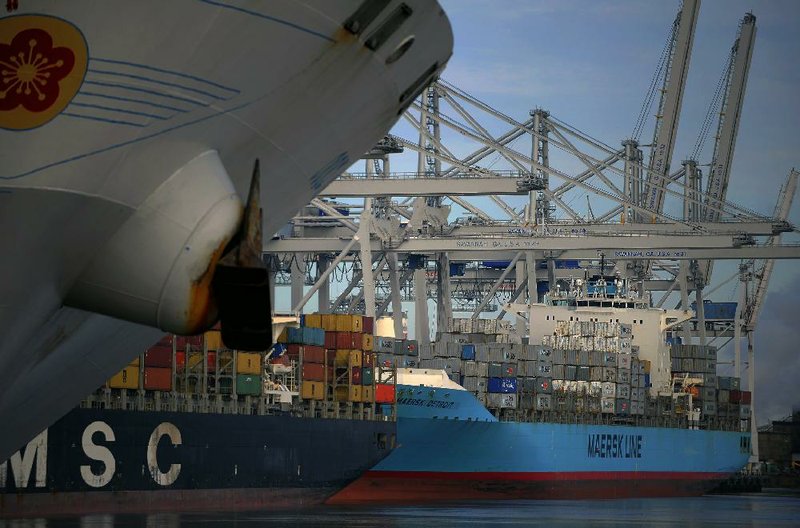WASHINGTON - The U.S. trade deficit widened slightly in January as a rise in imports of oil and other foreign goods offset a solid increase in exports.
The trade deficit increased to $39.1 billion, up 0.3 percent from December’s revised $39 billion deficit, the Commerce Department reported Friday.
Exports climbed 0.6 percent to $192.5 billion, led by increased sales of U.S.-made machinery, aircraft and medical equipment. Imports also rose 0.6 percent to $231.6 billion, reflecting a 9 percent jump in imports of petroleum. Imports of food and machinery also rose.
The trade deficit is the difference between imports and exports. A higher trade deficit acts as a drag on economic growth because it means U.S. companies are making less overseas than their foreign competitors are earning in U.S. sales.
“Import growth will increase as the economy expands,” Scott Brown, chief economist at Raymond James & Associates Inc. in St. Petersburg, Fla., said before the report. At the same time, “any widening in the trade deficit is going to be largely transitional. The trade deficit is likely to remain relatively contained this year.”
Sal Guatieri, senior economist at BMO Capital Markets, said the report suggests the trade deficit will remain on a gradual downward trend this year, reflecting a shrinking U.S. energy deficit.
In 2013, the trade deficit dropped 11.2 percent to $474.9 billion, providing a small boost to overall growth. Economists believe that trade will contribute to growth again this year but only by a modest amount.
They are forecasting that U.S. exports will keep rising but that it will be offset somewhat by gains in imports as a stronger U.S. and higher consumer spending attract more foreign goods.
In the October-December quarter, the economy grew at an annual rate of 2.4 percent, and a percentage point of that growth came from a shrinking trade deficit.
For the year, the falling trade deficit contributed a smaller 0.1 percentage point to growth.
One bright spot for trade is that America’s increased energy production is expected to continue.
A domestic energy boom has increased exports and reduced America’s dependence on foreign oil. U.S. petroleum exports rose to an all-time high of $137.2 billion last year, up 11 percent from 2012. Imports were down 10.9 percent to $369.4 billion.
For January, petroleum imports jumped 9 percent to $31.7 billion, reflecting an increased volume of shipments.
The average price for a barrel of crude oil fell to $90.21, the lowest level since February 2011. America’s energy exports dropped 8.4 percent to $12.4 billion.
As usual, the highest country trade imbalance was with China, a deficit of $27.8 billion that was up 13.5 percent from December.
The deficit with the 28-nation European Union fell 22.2 percent in January to $8.9 billion as U.S. exports to that region increased while imports from Europe to the United States declined.
The United States recorded another record annual trade deficit with China in 2013, and the expectation is that the deficit will rise further in 2014.
That has led to increased pressure on President Barack Obama’s administration and Congress to take a tougher line on what critics see as unfair trade practices that China is using to gain advantages.
The chief culprit, critics say, is China’s manipulation of its currency to keep it undervalued against the U.S. dollar. That makes Chinese goods cheaper in the United States and American products more expensive in China.
Overseas markets are cooling. China this month set a 7.5 percent target for economic growth in 2014, a pace that might make it more difficult to achieve the leadership’s goals of curbing credit risks and stemming the pollution choking the nation’s biggest cities.
Brazil, Latin America’s largest economy, expanded 0.7 percent in the fourth quarter from the previous three months, when it contracted, the national statistics agency said Feb. 27.
Information for this article was contributed by Martin Crutsinger of The Associated Press and Shobhana Chandra and Chris Middleton of Bloomberg News.
Business, Pages 29 on 03/08/2014

